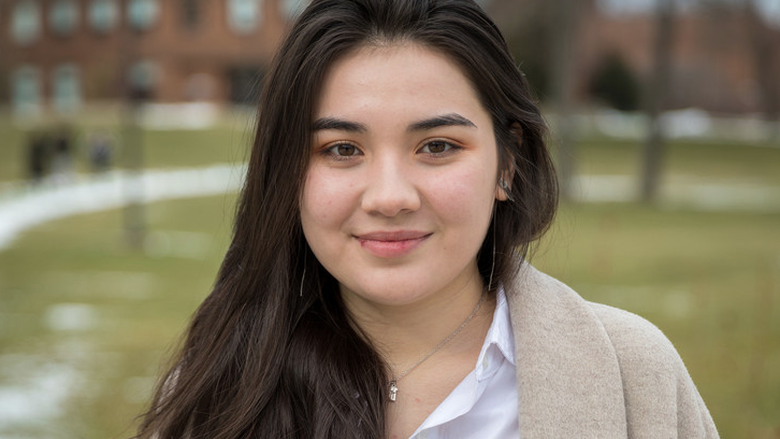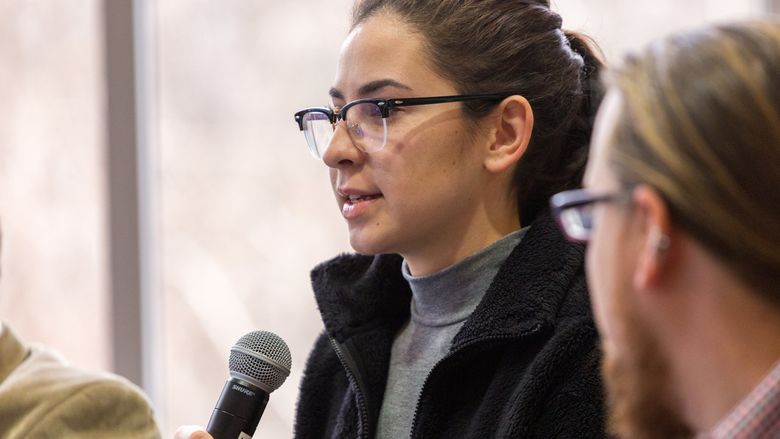MEDIA, Pa. — Iconic images of Martin Luther King Jr. during his “I Have a Dream” speech, as well as 6-year-old Ruby Bridges escorted to an all-white school by four deputy U.S. marshals flash across the screen. These were some of the sparks that helped ignite the Civil Rights Movement, said Fred J. Saffold III.
“You can’t understand the history of America without knowing the contributions by black America. Black history gives a sense of pride and it strengthens us,” said Saffold, founder of the True Black History Museum.
Saffold brought more than 150 artifacts, including original documents from historic figures such as Frederick Douglass and Booker T. Washington and slave shackles from the 1700s, to Penn State Brandywine on Feb. 5. He presented the True Black History Museum’s “A Tribute to the African-American Journey” exhibit to celebrate Black History Month. Saffold spoke of Carter G. Woodson, cited as the father of black history, who called for a Negro History Week, the precursor to Black History Month, in 1926 to coincide with the birthdays of Abraham Lincoln and Frederick Douglass.
A traveling museum that teaches black history through the use of rare and authentic artifacts, curator Saffold, an instructor at Wayne County Community College in Detroit, Michigan, has traveled across the country showcasing his museum items and speaking about African-Americans’ contributions to society.
“You can’t understand the history of America without knowing the contributions by black America. Black history gives a sense of pride and it strengthens us."
—Fred J. Saffold III, founder of the True Black History Museum
On display were beads and artifacts from Ghana. “We need to start with the African era, not just the slave period starting in the 1600s. These were Africans who were enslaved, not slaves. They did not live on plantations, they lived in prisons. It brings humanity back,” he explained.
The mission of this traveling museum, Saffold said, is to instill self-esteem and pride and to increase knowledge, awareness, cultural sensitivity and understanding for the historic experiences of African-Americans. “We need to celebrate black history not just from MLK Day to Feb. 28, but year-round,” said Saffold.
Also on display were photos of Aretha Franklin and Mae Carol Jemison, the first black woman to travel in space (1992), as well as a signed football jersey from activist and former San Francisco 49ers quarterback Colin Kaepernick.
“It’s important for student activities to be representative of our students’ cultural backgrounds, which is why I chose to bring Fred Saffold and his exhibit to campus,” said Bridget O'Donnell, Brandywine’s assistant director of student activities. “The True Black History Museum is a novel and interactive way for students to engage in African-American history outside of the classroom, but without having to leave campus.”
Saffold stressed the importance of “understanding our past to understand where we’re going. Consider being an ally for social and racial justice.”
Students, faculty and staff were left to ponder Saffold’s last question: “What will you do in the next 30 days in our pursuit to move this moment into a movement?”

